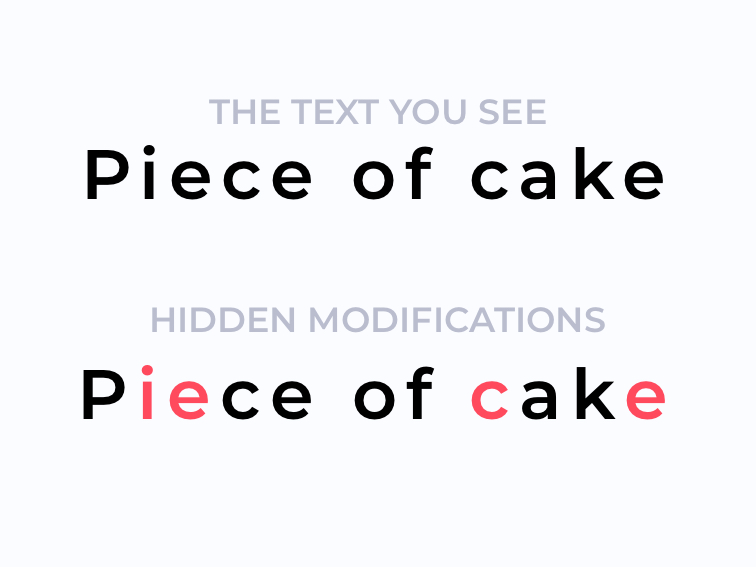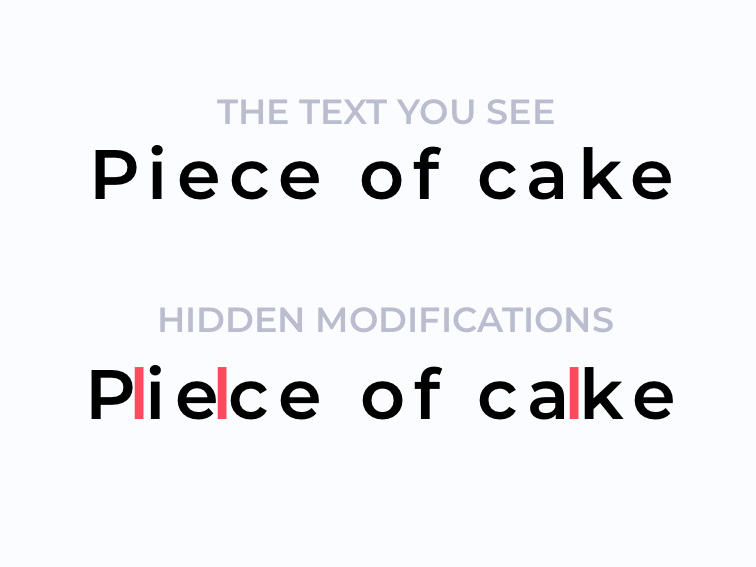
How Do Students Avoid Plagiarism Detection?
contributed by Yuliya Gorenko
Though cheating isn’t new, modern education puts much pressure on students.
Not so long ago, the lecture notes and the library were the only resources to refer to when writing a paper. But things have changed dramatically over time. Modern students have access to more information than ever on any subject, and, while it would seem reasonable that their papers should get better, they often get worse–and it’s not simply a matter of literacy.
See also 40 Of The Most Commonly Misspelled Words
When a teacher assigns a writing task, some students—well, they choose to cheat. Technology in general and the internet, in particular, offer many ways for students to do so. They cheat for many reasons, from the aforementioned pressure, poor planning, and time management to simply being unmotivated, overloaded by homework, and under social pressure. Whatever the reason, cheating still conflicts with the academic integrity of educational establishments.
So, how do learners cheat, and can we use modern technology to prevent it?
How Student ‘Creativity’ Can Go Wrong
Sometimes, students put a lot of creativity into cheating on a paper. By exposing students who cheat, educators can help them improve and guide their potential in the right direction. Most often, learners unwilling to work on an original paper and put their thoughts into words turn to text modification.
Modern instructors have to look out for many types of cheating and be able to detect different types of plagiarism in student work. Let’s take text modifications, for example. While they might seem different, text modifications are still a form of plagiarism. Just in September 2019, Unicheck detected 7% of text modifications.
Digital Text Modification
Digital text modification is a collective notion for how students plagiarize someone else’s work with the help of technology. Students turning to digital text modification believe that their professors don’t know all the technological tricks of altering texts and will thus be unable to identify the culprits. However, an advanced plagiarism checker solution can recognize numerous types of student cheating, even digital text modification.
Digital text modifications include different methods. Let’s take a closer look below.
4 Common Ways Students Avoid Plagiarism Detection
1. Letter Substitution
Letter substitution means using letter duplicates from other languages. For instance, students take someone else’s paper and before handing it in as their own, they change every English ‘o.’ ‘e,’ ‘a,’ and ‘c’ with Cyrillic letters ‘о’, ‘е’, ‘а’, and ‘с’ that look the same. This way, they can trick a primitive plagiarism checker.

2. Making Up References
Some students add non-existing or unrelated references to their paper instead of searching for the needed one. For instance, a student writes an essay on Romeo and Juliet, and instead of quoting real criticism on the work, they make up fake references or state real references with fake page numbers. A reference given by the student could be related to the topic but not state or support the ideas the student connects with the reference.
3. Inserting White Text
Sometimes, students insert unique white-colored text to mask plagiarism. They add different characters and spaces in white so the teacher does not see them. A primitive plagiarism checker will not be able to find them either.

4. Format Modification
Students who get creative incorrectly sometimes present a paper as an image so that an instructor cannot run it through anti-plagiarism software. An instructor can still read and grade the paper, but they cannot check it with any software. This is the reason why instructors specify what paper format they require.
Is Text Modification Cheating?
Sometimes, the most reckless students turn to direct plagiarism, plainly copying someone else’s work word-for-word. Rather than citing the author or using their quotations, plagiarizing the text pretends that the work belongs to them. Direct plagiarism is the easiest to detect, with practically any plagiarism checker for teachers available online.
Text modification is a form of cheating that implies changing someone else’s original work to present it as your own. Different kinds and methods of text modification require different time input, level of creativity, and work from the students reluctant to do their papers correctly. Text modification is very close to plagiarism. Yet, it requires more time and effort than plain copying and pasting.
Detecting Text Modification Using Technology
Yes, students are innovative regarding cheating, but advanced technology can help teachers be one step ahead. LMS administrators and teachers can cut the number of cheating cases drastically with the help of appropriate software. An up-to-date anti-plagiarism solution can identify all the known types of cheating. This way, teachers will know which students need more attention. Instructors can talk to such students and help them deal with the writing difficulties they might face, like lack of time, motivation, or inability to put their ideas into words. The students will be able to get back on the right track as soon as possible and understand that fair competition in class is the only way to go.
Revising students’ assignments for plagiarism manually is not enough anymore. Sometimes, educators can’t do it due to the lack of time and many tasks. That’s why it’s much more beneficial for an instructor to run every submitted paper through reliable anti-plagiarism software automatically and just review the report.
A plagiarism checker is also an excellent tool for students who write original papers. Plagiarism can be unintentional, too. For instance, when a student recalls some facts from the lectures and inserts them into their writing without citing, or when they repeat precisely the same thoughts as someone else did in the paper they read, it’s still plagiarism. Checking a paper thoroughly before submitting it to an educator can help students improve their work and maintain their reputation.
Conclusion
Plagiarism is the plague of education and scholarship. With more resources than ever to write an original paper, countless students worldwide search for an easy way out and try to present someone else’s work as their own. Some methods of cheating require so much creativity that teachers often wonder why students don’t put all this time and effort into doing the real work.
Both teachers and students should know how to check for plagiarism to ensure that every piece of submitted work is original. After all, technology is not meant to make students’ lives harder. It is intended to assist educators in identifying issues and addressing them, helping students get their education, and using their creativity correctly.
This is sponsored content. You can read more about our sponsored content policy here.